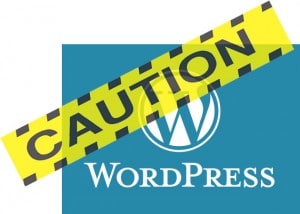Sadly, in the world we live in, websites are always under threat of attack from hackers and people with negative intent. A good example of this happened the other day. The company which houses my dedicated server was down for almost 24 hours. They claimed it was due to a firmware update in their main data center. Now whether that’s true, or they were hacked and they just can’t tell you for security reasons, the result was the same. My site was down as were many of my customers who are on that particular server. Unfortunately with hundreds of thousands of sites affected, it is very hard to get in touch with hosting companies. Live chat went down as they couldn’t handle the volume, and forget about phones as you sat on hold for hours.

The problem is that since emergencies don’t happen all the time (Thankfully), people don’t always know where to turn. For me this is a question of educating my clients. In my next email to my client list, I will be instructing people what to do in the event their website is down and/or email. Unfortunately one of the first thing that happens is people want to go in and change email settings. I always instruct people to first make sure their websites are up and running before mucking around with your email. Typically your email settings don’t change very often. So they should leave them alone unless they speak with me.
Managing websites is about communication. In this day and age you need to have alternate forms of communication as well. Social media is perfect as most people are on either Facebook or Twitter and both have an excellent up time records.

Because there are some treacherous roads you need to cross. Namely, plug-ins and WordPress updates. When you log into your WordPress dashboard you’re typically greeted with what plugins need to be updated and if there is a core WordPress update. Because they’re basically automatic updates you go ahead and do them. 9 out of 10 times this works fine. The 10th time however you blow away your website entirely or screw up functionality or display.
Here are 3 cases that illustrate my point:
Case number one:
I had a simple WordPress point release. I had done this update to 20 other sites. But on this one site I clicked update and all of a sudden the screen went white. Nothing, zero, zilch, ugatz. Site was gone. Fortunately, I back up my sites on a regular basis, and in this case had just taken a full backup. Getting it back was not as easy as you might think even with backup plugin. Restore failed. I was forced to FTP the backup files to the site. Luckily this took care of it and the client site was only down for a matter of minutes. But, imagine Joe client who doesn’t have the skill set nor the ability to get their site back, their business literally could be crippled for days.
Case number two:
I had a notification that an e-commerce client had an update to their UPS plug-in. Seemed like a very simple update, according to the documentation. I made the update, to the site did some testing. It seemed to be okay. But, I was wrong. When you added something to your cart, you got a PHP fatal error. Again, luckily I had just taken a backup and could restore the plug-in to the prior version. If not, a business which relies almost 100% on their website would have been down. While I am not a genius, I do know how to backup properly and I do know how to restore. And if push came to shove I had the whole site backed up on my server daily. So I could’ve gotten the client back up and running relatively quickly.
Case number three:
I have a client which uses a web calendar. The plug-in update came and again seem pretty minor. Well, this update actually disabled the backend. You could not get to the dashboard! And now luckily, again I knew what to do and once I disabled the plugin I could go back and grab the backup and again restore the old version. If not, the client would have been out of luck.
Bottom line:
Managing a WordPress site is not as easy as they make it sound. There is a lot of things you need to know in order to keep it running smooth 24/7/365. So make sure you have someone on your side helping you manage your website. That doesn’t mean you can’t do certain tasks yourself and save money. But you need someone in your corner to help you, especially in those times when you have problems. Not to say that that experts don’t have problems as well, we do. But part of being an expert is knowing how to solve those problems which at times can seem insurmountable. If you need help with your website management, please contact us at RooSites. We are happy to help.